
Álvaro San Millán receives the SEM award Jaime Ferrán 2021

Álvaro San Millán, researcher in the Department of Microbial Biotechnology at the CNB-CSIC has received this year the Jaime Ferrán Prize for young researchers from the Spanish Society of Microbiology (SEM).
San Millán completed his PhD at the Madrid Complutense University under the supervision of Dr. González-Zorn, studying the mechanisms of antimicrobial resistance of animal and human pathogens. After several years at the University of Oxford working on the evolution of plasmid-mediated antimicrobial resistance, he joined the Ramón y Cajal Institute for Health Research (IRYCIS) in Madrid where he began his career as an independent researcher as a Miguel Servet Fellow. He is currently a tenured researcher in the Microbial Biotechnology department of the CNB-CSIC.
His career has developed in the field of antimicrobial resistance in bacteria, one of the current main problems for public health, with an urgent need to develop new therapeutic strategies aimed at counteracting bacteria resistant to antibiotics. San Millán focuses his current research on the role of plasmids in bacterial resistance against antibiotics and on the development of new control strategies for infectious diseases. Results from his projects have been published in journals such as Nature Microbiology, Science, Proceeding of the National Academy of Sciences or eLife among others.
Descifrado cómo las bacterias usan redes de proteínas para controlar a las células durante la infección
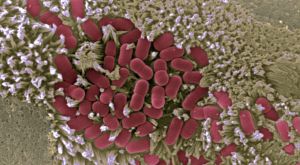
- Los resultados podrían ayudar a mejorar el diseño de vacunas y otros tratamientos frente a estos patógenos
- Los investigadores han combinado experimentos en el laboratorio con herramientas de inteligencia artificial
Un estudio en el que han participado científicos del Consejo Superior de Investigaciones Científicas (CSIC) ha logrado descifrar la forma en la que las bacterias patógenas, como Salmonella y Escherichia coli, usan redes de proteínas para controlar a las células durante una infección. Los resultados del trabajo, que han sido publicados en la revista Science, podrían ayudar a mejorar el diseño de vacunas y otros tratamientos frente a estos patógenos.
Muchas de las bacterias que producen enfermedades introducen proteínas maliciosas, denominadas efectores, en la célula, con las que reprograman sus funciones para beneficiar la infección. Los efectores toman el control de las células para, por ejemplo, evitar que se envíen señales de alarma al sistema inmune y así permitir a los intrusos colonizar el intestino.
“Los antibióticos son poco eficaces para combatir a estas infecciones ya que eliminan la flora bacteriana intestinal beneficiosa, la microbiota, y pueden acabar ayudando a las bacterias patógenas a colonizar el intestino. Por lo tanto, sigue siendo un reto encontrar tratamientos efectivos para estas infecciones y, para ello, es clave comprender cómo funciona el proceso infectivo”, explica el investigador del CSIC Luis Ángel Fernández, del Centro Nacional de Biotecnología (CNB-CSIC).
Abierto el plazo de solicitud de las Becas JAE de Introducción a la Investigación 2021 para estudiantes universitarios
Se ha publicado la nueva convocatoria para solicitar becas JAE de Introducción a la Investigación en centros del CSIC. Las 250 becas ofertadas becas están orientadas a estudiantes universitarios, especialmente aquellos en el último curso de grado universitario y tendrán una duración de 5 meses consecutivos, iniciándose en octubre de 2021.
El plazo de presentación de solicitudes a través de la web del CSIC es del 10-3-2021 al 09-04-2021
NUEVO: RESOLUCION DE CONCESIÓN: 19 julio 2021
Plazo de aceptación o renuncia: Del 21 de julio al 3 de agosto de 2021
El Centro Nacional de Biotecnología recibirá hasta 29 estudiantes en el curso 2021-2022
Rafael Giraldo, new elected president of the Spanish Society for Microbiology
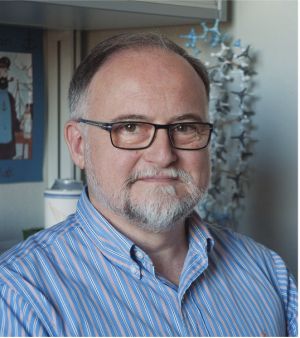
Rafael Giraldo, researcher in the Microbial Biotechnology Department at the National Centre for Biotechnology (CNB-CSIC) has been elected the new President-elect of the Spanish Society of Microbiology (SEM). The result of the voting was announced last Friday at a meeting of the Executive Board of the Society. According to the Society's Bylaws, he will remain as Vice-President for the next two years, collaborating with the current President, Antonio Ventosa (University of Seville).
Giraldo, who joined the CNB at the end of 2018, has spent most of his career at the CSIC's Center for Biological Research (CIB) studying through interdisciplinary approaches the interactions between proteins and DNA, particularly in plasmid replication, using yeast and bacteria as models. His most recent research focuses in the formation of protein amyloid aggregates in E. coli, the molecular mechanisms that determine the shift between functional and cytotoxic amyloids, and their applications as possible synthetic resources of use in biotechnology and biomedicine. He was elected member of the Academia Europaea (Cell and Developmental Biology section) in 2010, and has been Vice-President of the CSIC Ethics Committee between 2018-2020.
Desvelada la estructura del adenovirus causante de un gran número de infecciones gastrointestinales infantiles
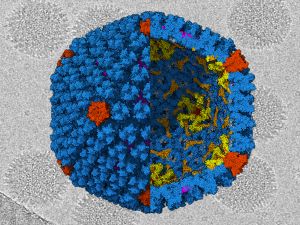
- Un equipo del CSIC revela características de la estructura del virus que podrían permitirle resistir e incluso aprovechar las condiciones ácidas del aparato digestivo para reproducirse
- Esta peculiaridad lo convierte en candidato para el desarrollo de vacunas u otros medicamentos estables en condiciones ácidas, o para administración por vía oral
Un equipo internacional, liderado por el Consejo Superior de Investigaciones Científicas (CSIC), ha revelado por primera vez la estructura del adenovirus de tipo 41 (Ad41), uno de los principales agentes virales que provocan la gastroenteritis infantil. El trabajo, publicado en Science Advances, sugiere que las diferencias observadas entre la envoltura proteica (cápsida) de este virus y la de otros adenovirus de tipo respiratorio podrían explicar la predilección del primero por el aparato digestivo. El conocimiento de la estructura del virus puede contribuir a desarrollar terapias dirigidas de manera exclusiva al tracto gastrointestinal y a nuevas vacunas basadas en los adenovirus, como las que se están desarrollando actualmente frente al virus SARS-CoV-2.
Descubren el mecanismo por el que las enterobacterias se adaptan a nuestro organismo
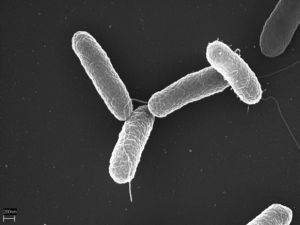
- Un grupo de investigación con participación del Instituto de Biomedicina de Valencia (IBV) y del Centro Nacional de Biotecnología de Madrid (CNB), ambos del CSIC, realiza la mejor caracterización del sistema que permite a la bacteria Salmonella sobrevivir en el cuerpo humano
- El hallazgo abre la puerta a diseñar nuevos fármacos antimicrobianos
Un grupo de investigación donde participan científicos del Instituto de Biomedicina de Valencia (IBV) y del Centro Nacional de Biotecnología (CNB), ambos del Consejo Superior de Investigaciones Científicas (CSIC), junto a la Universitat de València (Instituto Universitario Biotecmed) y la Universidad Autónoma de Madrid, han aclarado el mecanismo que emplea la bacteria patógena Salmonella para controlar la expresión de cientos de sus genes, entre ellos los que controlan la adaptación a nuestro organismo y, por tanto, su capacidad para infectarnos. El hallazgo, publicado en la revista Nucleic Acids Research, abre la puerta a diseñar nuevos fármacos antimicrobianos.
El trabajo describe con precisión el mecanismo de funcionamiento de la proteína RcsB de Salmonella para controlar la expresión de un número elevado de genes. RcsB es una proteína que se une al ADN para controlar la expresión de genes cuyos productos son necesarios para reorganizar la arquitectura de la envuelta celular en respuesta a daños externos. Esta proteína recibe señales de otras proteínas dispuestas en la envuelta y que actúan de antenas, formando todas ellas el denominado ‘sistema Rcs’, conservado en la familia de las enterobacterias (Enterobacteriaceae). Esta familia está formada por más de 100 géneros bacterianos que incluyen especies y serovares como Salmonella enterica serovar Typhi (S. typhi) o Shigella dysenteriae, causantes de la fiebre tifoidea y la disentería en humanos.
€5.7 million pan-European research and innovation project to provide insight into the cellular origins of disease and to aid the development of novel therapeutics
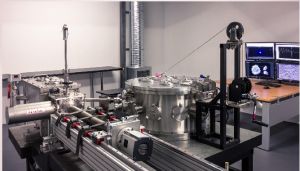
- Scientists at leading European Virology Research organisations aim to demonstrate how imaging the whole internal structure of intact biological cells provides valuable information to understand the disease pathways of viruses.
CoCID (Compact Cell Imaging Device), a €5.7 million, four-year, Horizon 2020 funded pan-European project, focused on the development of a soft X-ray-based methodology that enables fast and inexpensive three-dimensional imaging of whole internal structure of intact biological cells, has officially commenced.
The objective of project CoCID is to develop a lab-scale, soft X-ray microscope, which can be used as a research tool to help scientists to understand the cellular origin of diseases.
The benefits of this compact imaging device will be demonstrated through a series of virology use cases that enable researchers to decipher critical changes in cell morphology induced by viruses, such as SARS-CoV-2, in their host cell with the aim to identify possible targets for therapy suppressing virus replication and/or cellular responses of relevance to the virus.
The CoCID project is being co-ordinated by University College Dublin (UCD). The project partners are Heidelberg University Hospital and the Ruprecht-Karls-University Heidelberg, in Germany, the University of Jyväskylä, Finland; the National Centre for Biotechnology and the Alba Synchrotron in Spain along with SiriusXT, a UCD spin-out company that is licensing miniaturised light source technology from UCD to develop the microscope.
Identificados los genes que producen pelo en los frutos para adaptarse al clima
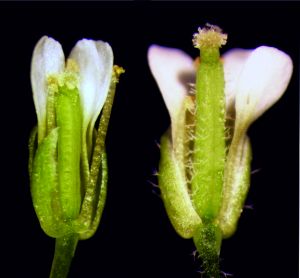
- La combinación de mutaciones en tres genes es necesaria para la aparición de pelo en los frutos de Arabidopsis, la planta más utilizada como modelo genético
- Esta combinación de genes ha evolucionado sólo en un linaje antiguo de la Península ibérica
- Este nuevo carácter podría ayudar a la adaptación de las plantas al cambio climático
Para identificar especies vegetales en Botánica, se utilizan claves de clasificación basadas en las características visuales que presentan las plantas. De esta forma se pueden distinguir especies cercanas que tiene una característica diferencial. En el caso de Arabidopsis thaliana, la planta más utilizada como modelo en investigación, una de sus características para identificarla es la presencia de pelos (tricomas) en las hojas pero no en los frutos.
Sin embargo, el nuevo trabajo del grupo dirigido por el investigador Carlos Alonso-Blanco en el Centro Nacional de Biotecnología del Consejo Superior de Investigaciones Científicas (CNB-CSIC) ha identificado poblaciones naturales de A. thaliana que desarrollan pelo en los frutos, lo que proporciona una nueva característica para esta planta. Su trabajo, publicado en la revista The Plant Cell detalla los mecanismos genéticos y moleculares que han permitido la aparición de pelo en los frutos de Arabidopsis.
Día internacional de la Mujer y la Niña 2021
El día 11 de febrero se celebra el Día Internacional de la Mujer y la Niña en la Ciencia. En el CNB-CSIC nos unimos a la Iniciativa 11 de Febrero, y este año, ademas del Seminario de Concha Monje, participamos en varias actividades coordinadas por los centros CSIC el campus de Cantoblanco:
- 9 febrero, 18:30. María José Rodríguez (IFT, USU). La increíble ciencia detrás de los agujeros negros, Gravedad y el premio Nobel de 2020
- 11 febrero, 14:00. Lluís Montoliu (CNB, CSIC). Dos investigadoras premiadas con el premio Nobel de Química de 2020 como promotoras de la revolución CRISPR.
- Escape Road: A la búsqueda de las científicas Nobel y no Nobel.
Casa de la Juventud de Tres Cantos. 13 febrero. Exposición y concurso. Acceso libre y gratuito.
Además:
- CNB: Webinar Concha Monje, Robótica: Retos y Aplicaciones, 11 Febrero 16:00
- #Youtubers por un día IFT
- ICMM: 8 febrero, 12:00. Esther Garcés, Silvia Donoso (ICM, CSIC). Plan de Igualdad de Género como instrumento para el avance en la igualdad en la investigación, el ejemplo en el Institut de Ciències del Mar
- ICMM-UAM: Talleres en la Facultad de Profesorado de la UAM. 17 febrero, 12:00 y 15:30. Elena Bascones (ICMM, CSIC). Por qué las niñas no estudian ciencias técnicas y qué podemos hacer en clase.
- ICMAT: 11 febrero, 12:00. Marta Folgueira López (UCM). Constelaciones matemáticas.
- ICV. Ciclo de webinarios, ICV en Femenino, 8 de Febrero y 12 de marzo
- CIAL. Quiz Online, Webinars, talleres
- Escape Road: A la búsqueda de las científicas Nobel y no Nobel. Campus UAM
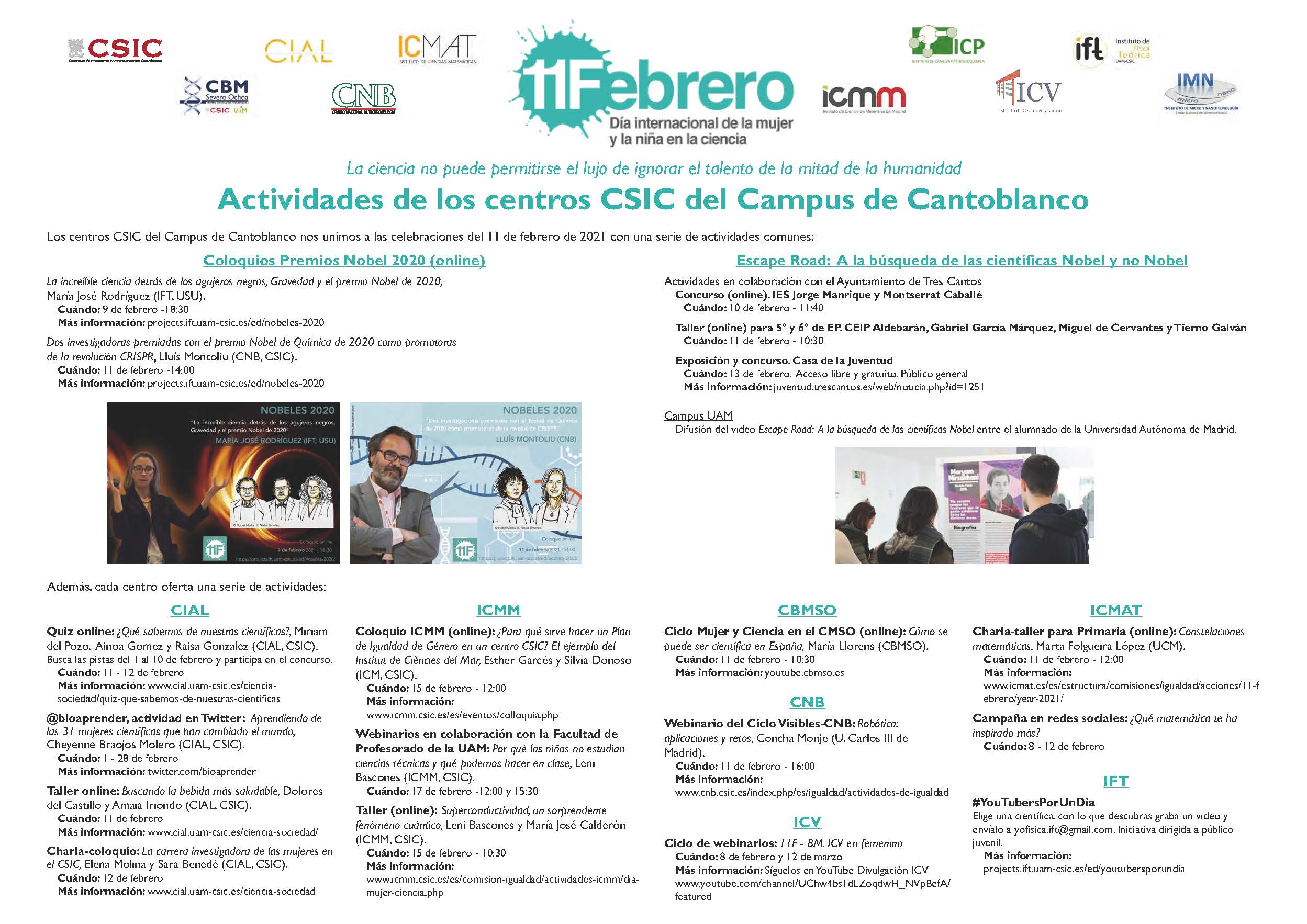
Identificada una nueva estrategia para frenar las resistencias a antibióticos
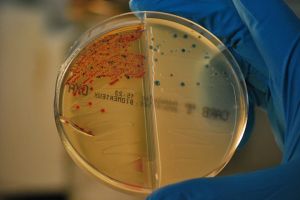
- Un trabajo del CNB-CSIC y el IRyCIS se centra en los elementos genéticos móviles de las bacterias (plásmidos) como herramientas para frenar la expansión de las resistencias
- Los plásmidos son el principal mecanismo de adquisición de resistencia en patógenos bacterianos de relevancia clínica
- Al ritmo actual, las infecciones causadas por bacterias resistentes a los antibióticos disponibles pueden convertirse en la mayor causa de mortalidad para el año 2050
La resistencia de las bacterias a los antibióticos es uno de los principales problemas actuales de salud pública. De acuerdo con estimaciones recientes, aproximadamente 700.000 personas mueren cada año en el mundo como consecuencia de infecciones resistentes a los antibióticos y, de no revertirse la tendencia actual de diseminación de la resistencias, en el 2050 las infecciones resistentes podrían convertirse en la primera causa de mortalidad en el mundo. Por este motivo, existe una necesidad urgente de desarrollar nuevas estrategias terapéuticas destinadas a contrarrestar las bacterias resistentes a antibióticos.
Investigadores del Centro Nacional de Biotecnología perteneciente al Consejo Superior de Investigaciones Científicas (CNB-CSIC), en colaboración con el Instituto Ramón y Cajal de Investigación Sanitaria (IRYCIS) del Hospital Universitario Ramón y Cajal en Madrid, han descrito una nueva estrategia basada en explotar la respuesta fisiológica que inducen los plásmidos en las bacterias y lograr así revertir la evolución de las resistencias a los antibióticos. Los detalles del trabajo, publicado en la revista eLife, podrían sentar las bases para el desarrollo de nuevas terapias contra las bacterias portadoras de estos plásmidos de resistencia, basándose en un fenómeno de la sensibilidad colateral asociada a ellos.
COOKIES POLICY
A cookie is a text file that is stored on your computer or mobile device via a web server and only that server will be able to retrieve or read the contents of the cookie and allow the Web site remember browser preferences and navigate efficiently. Cookies make the interaction between the user and the website faster and easier.
General information
This Website uses cookies. Cookies are small text files generated by the web pages you visit, which contain the session data that can be useful later in the website. In this way this Web remembers information about your visit, which can facilitate your next visit and make the website more useful.
How do cookies?
Cookies can only store text, usually always anonymous and encrypted. No personal information is ever stored in a cookie, or can be associated with identified or identifiable person.
The data allow this website to keep your information between the pages, and also to discuss how to interact with the website. Cookies are safe because they can only store information that is put there by the browser, which is information the user entered in the browser or included in the page request. You can not run the code and can not be used to access your computer. If a website encrypts cookie data, only the website can read the information.
What types of cookies used?
The cookies used by this website can be distinguished by the following criteria:
1. Types of cookies as the entity that manages:
Depending on who the entity operating the computer or domain where cookies are sent and treat the data obtained, we can distinguish:
- Own cookies: are those that are sent to the user's terminal equipment from a computer or domain managed by the editor itself and from which provides the service requested by the user.
- Third party cookies: these are those that are sent to the user's terminal equipment from a machine or domain that is not managed by the publisher, but by another entity data is obtained through cookies.
In the event that the cookies are installed from a computer or domain managed by the editor itself but the information collected by these is managed by a third party can not be considered as party cookies.
2. Types of cookies as the length of time that remain active:
Depending on the length of time that remain active in the terminal equipment can be distinguished:
- Session cookies: cookies are a type designed to collect and store data while the user accesses a web page. Are usually used to store information that only worth preserving for the service requested by the user at any one time (eg a list of products purchased).
- Persistent cookies: cookies are a type of data which are stored in the terminal and can be accessed and treated for a period defined by the head of the cookie, and can range from a few minutes to several years.
3. Cookies types according to their purpose:
Depending on the purpose for which the data are processed through cookies, we can distinguish between:
- Technical cookies: these are those that allow the user to navigate through a web page or application platform and the use of different options or services it exist as, for example, control traffic and data communication, identify the session, access to restricted access parts, remember the elements of an order, make the buying process an order, make an application for registration or participation in an event, use security features while browsing store content for dissemination videos or sound or share content via social networks.
- Customization cookies: these are those that allow the user to access the service with some general characteristics based on a predefined set of criteria in the user terminal would eg language, the type of browser through which you access the service, the locale from which you access the service, etc.
- Analysis cookies: they are those that allow the responsible for them, monitoring and analyzing the behavior of users of the web sites that are linked. The information gathered through such cookies are used in measuring the activity of web sites, application or platform and for the profiling of user navigation of such sites, applications and platforms, in order to make improvements function data analysis how users use the service.
Management tool cookies
This Website uses Google Analytics.
Google Analytics is a free tool from Google that primarily allows website owners know how users interact with your website. Also, enable cookies in the domain of the site in which you are and uses a set of cookies called "__utma" and "__utmz" to collect information anonymously and reporting of website trends without identifying individual users..
For statistics of use of this website use cookies in order to know the level of recurrence of our visitors and more interesting content. This way we can concentrate our efforts on improving the most visited areas and make the user more easily find what they are looking for. On this site you can use the information from your visit for statistical evaluations and calculations anonymous data and to ensure the continuity of service or to make improvements to their websites. For more details, see the link below privacy policy [http://www.google.com/intl/en/policies/privacy/]
How to manage cookies on your computer: disabling and deleting cookies
All Internet browsers allow you to limit the behavior of a cookie or disable cookies within settings or browser settings. The steps for doing so are different for each browser, you can find instructions in the help menu of your browser.
If you decline the use of cookies, since it is possible thanks to the preferences menu of your browser or settings, reject, this website will continue to function properly without the use of the same.
Can you allow, block or delete cookies installed on your computer by setting your browser options installed on your computer:
- For more information about Internet Explorer click here.
- For more information on Chrome click here.
- For more information about Safari click here.
- For more information about Firefox click here.
Through your browser, you can also view the cookies that are on your computer, and delete them as you see fit. Cookies are text files, you can open and read the contents. The data within them is almost always encrypted with a numeric key corresponding to an Internet session so often has no meaning beyond the website who wrote it.
Informed consent
The use of this website on the other hand, implies that you paid your specific consent to the use of cookies, on the terms and conditions provided in this Cookies Policy, without prejudice to the measures of deactivation and removal of cookies that you can take, and mentioned in the previous section.





